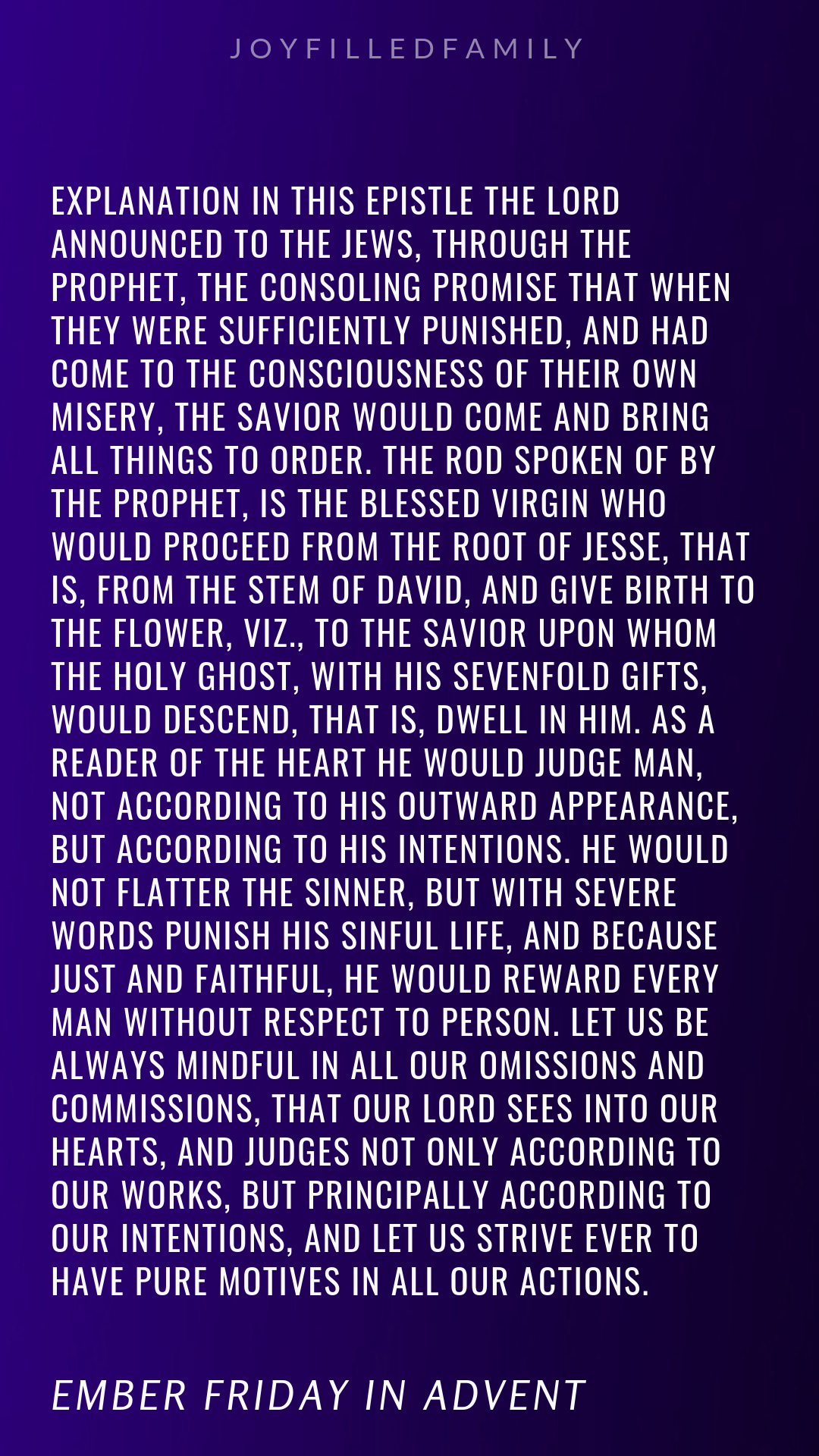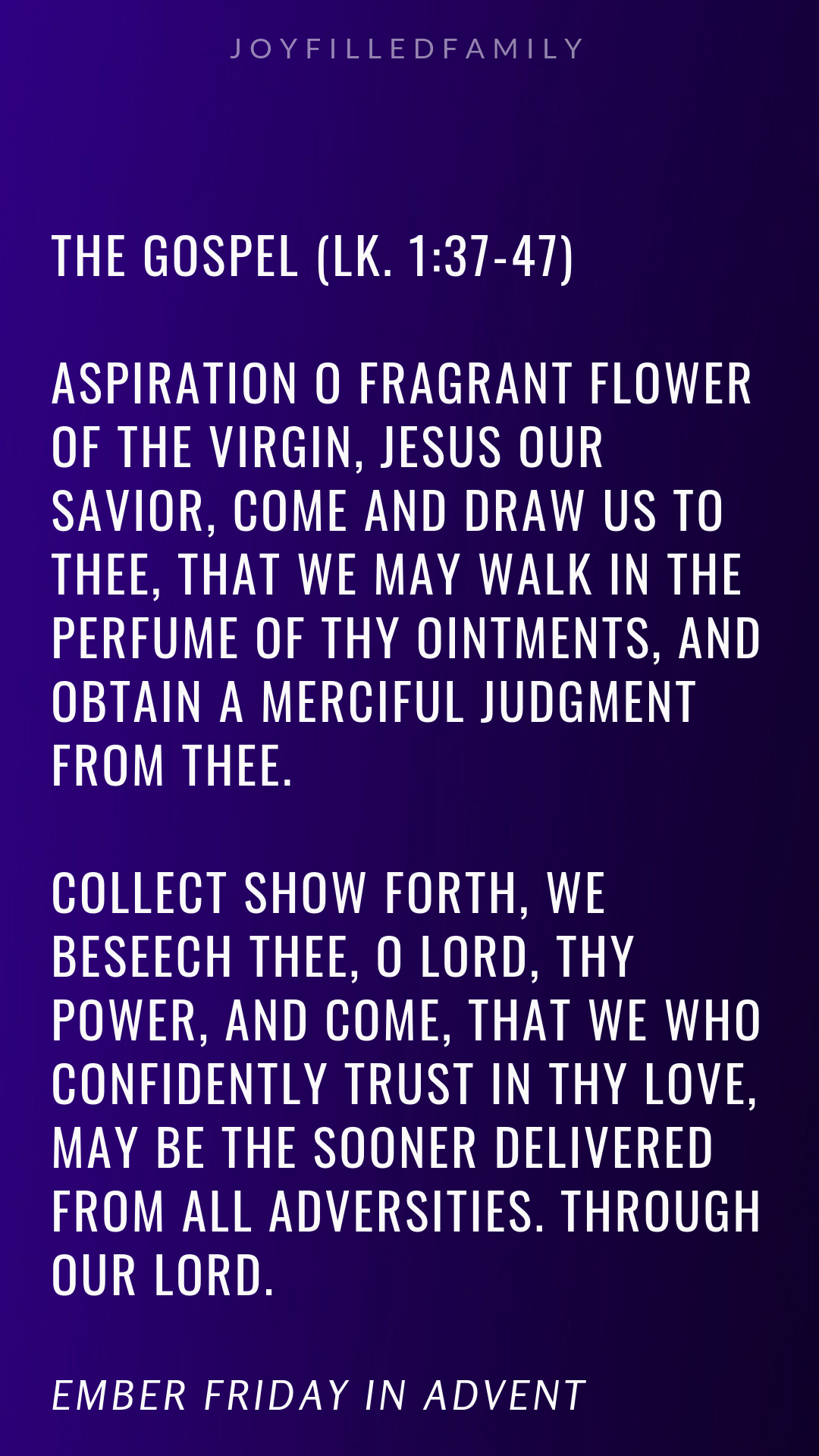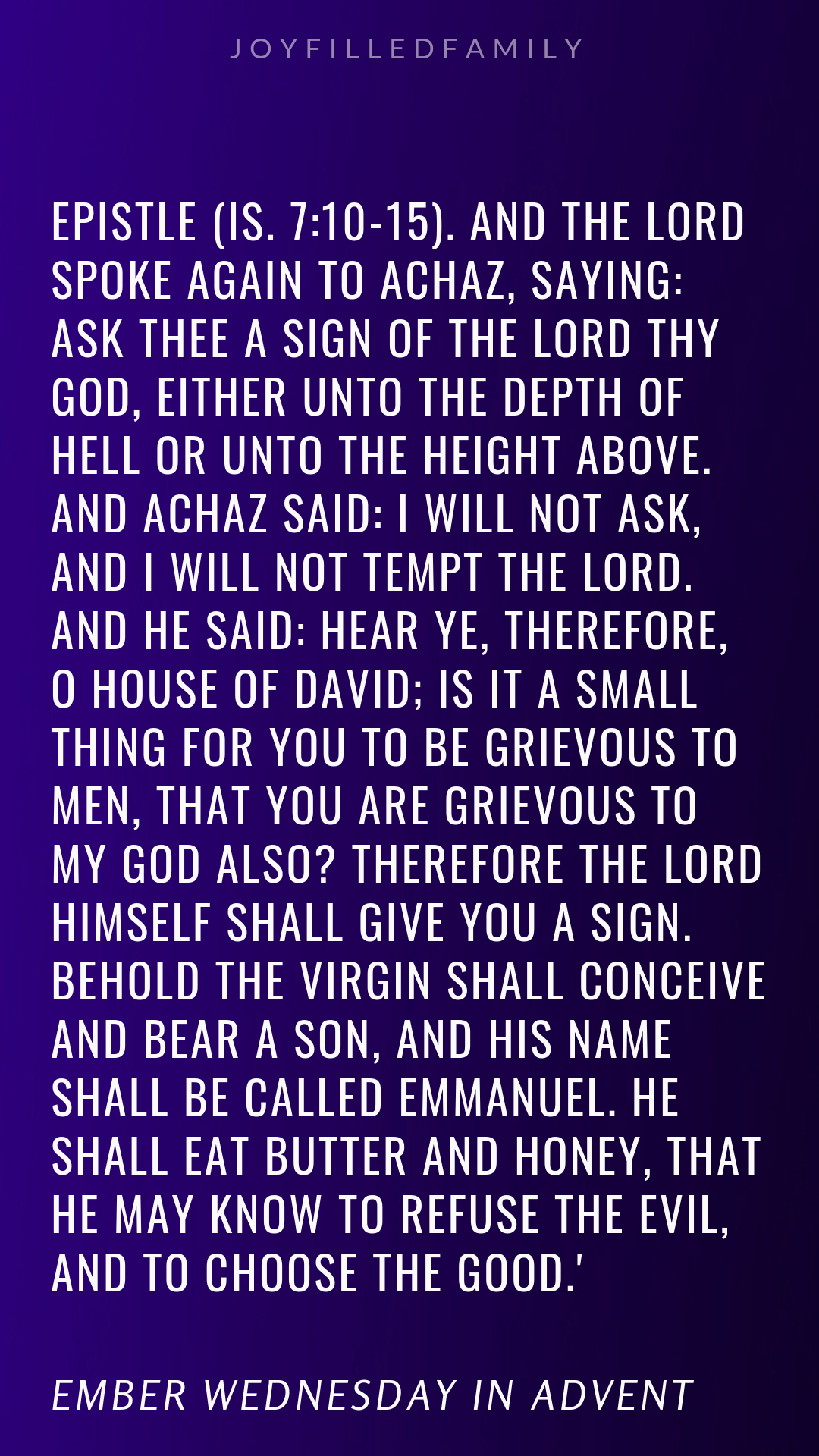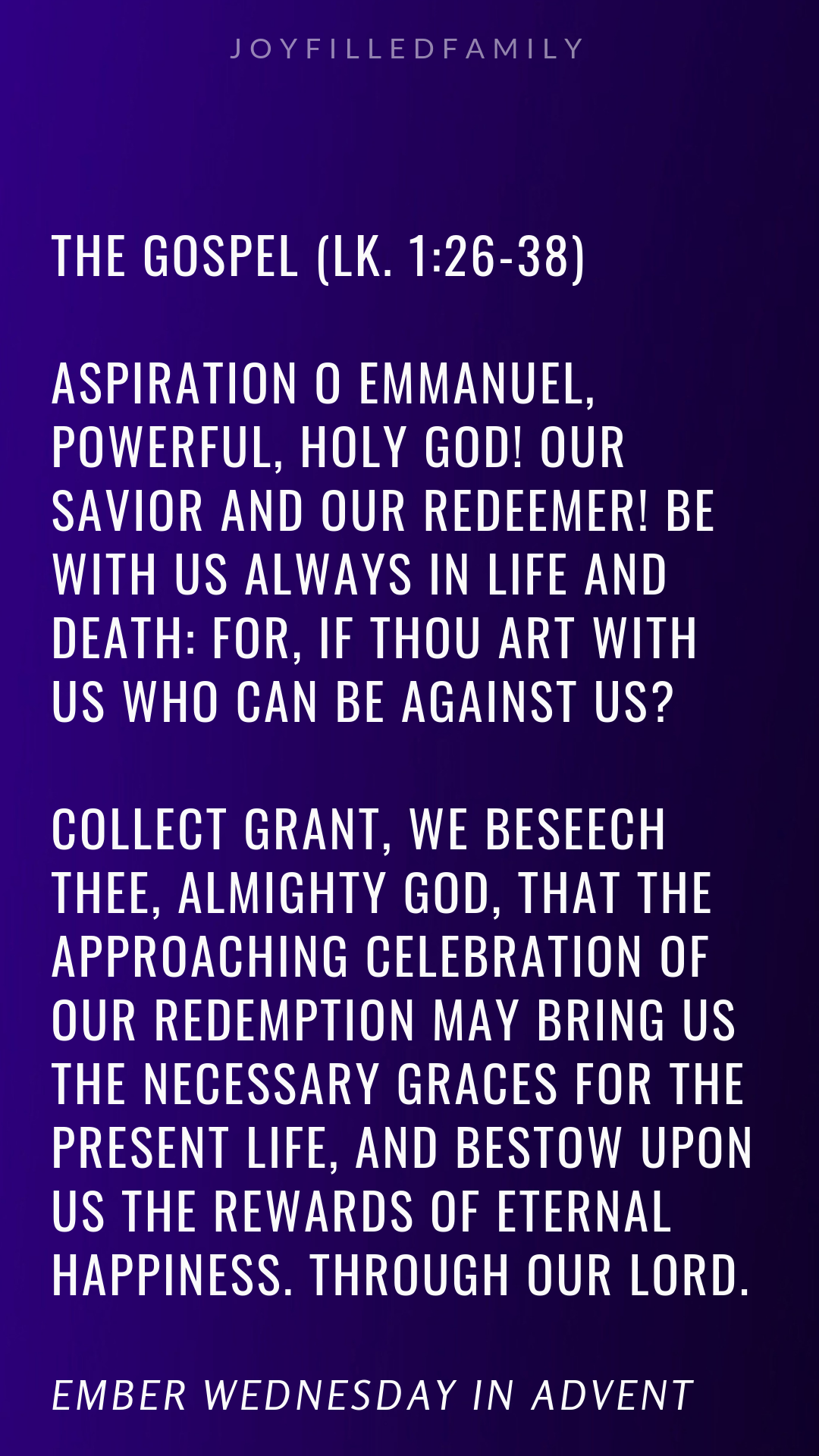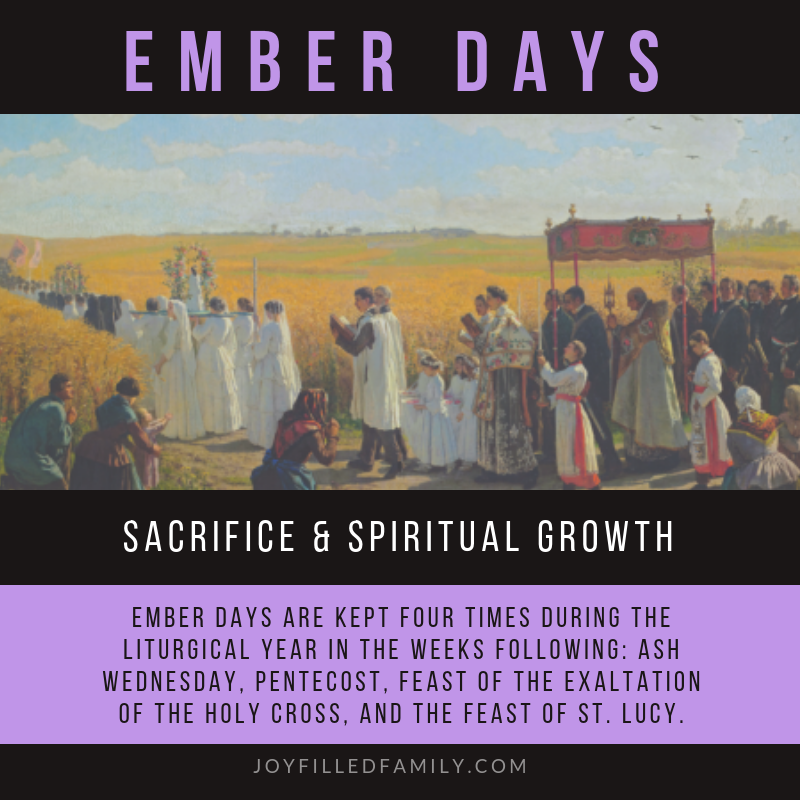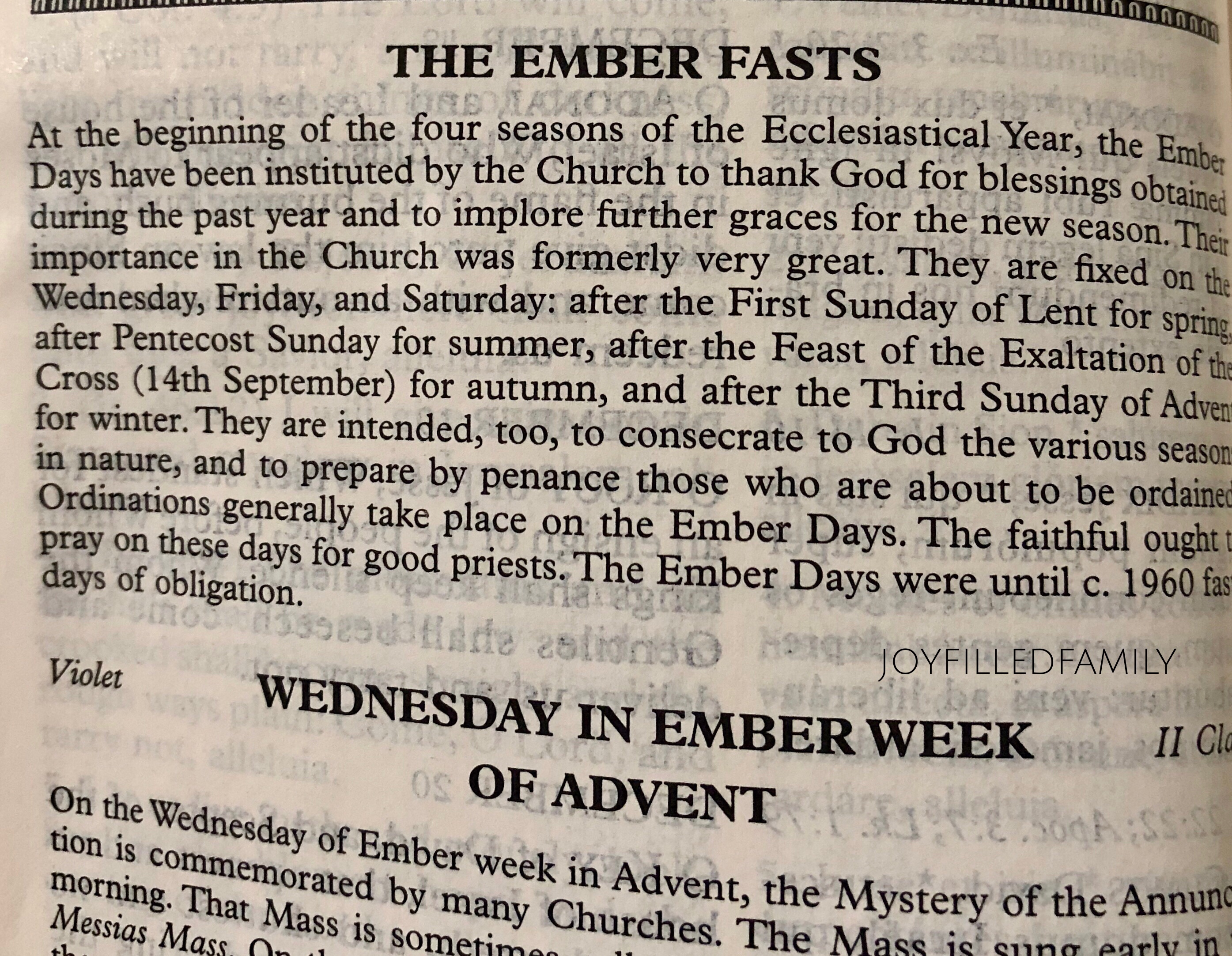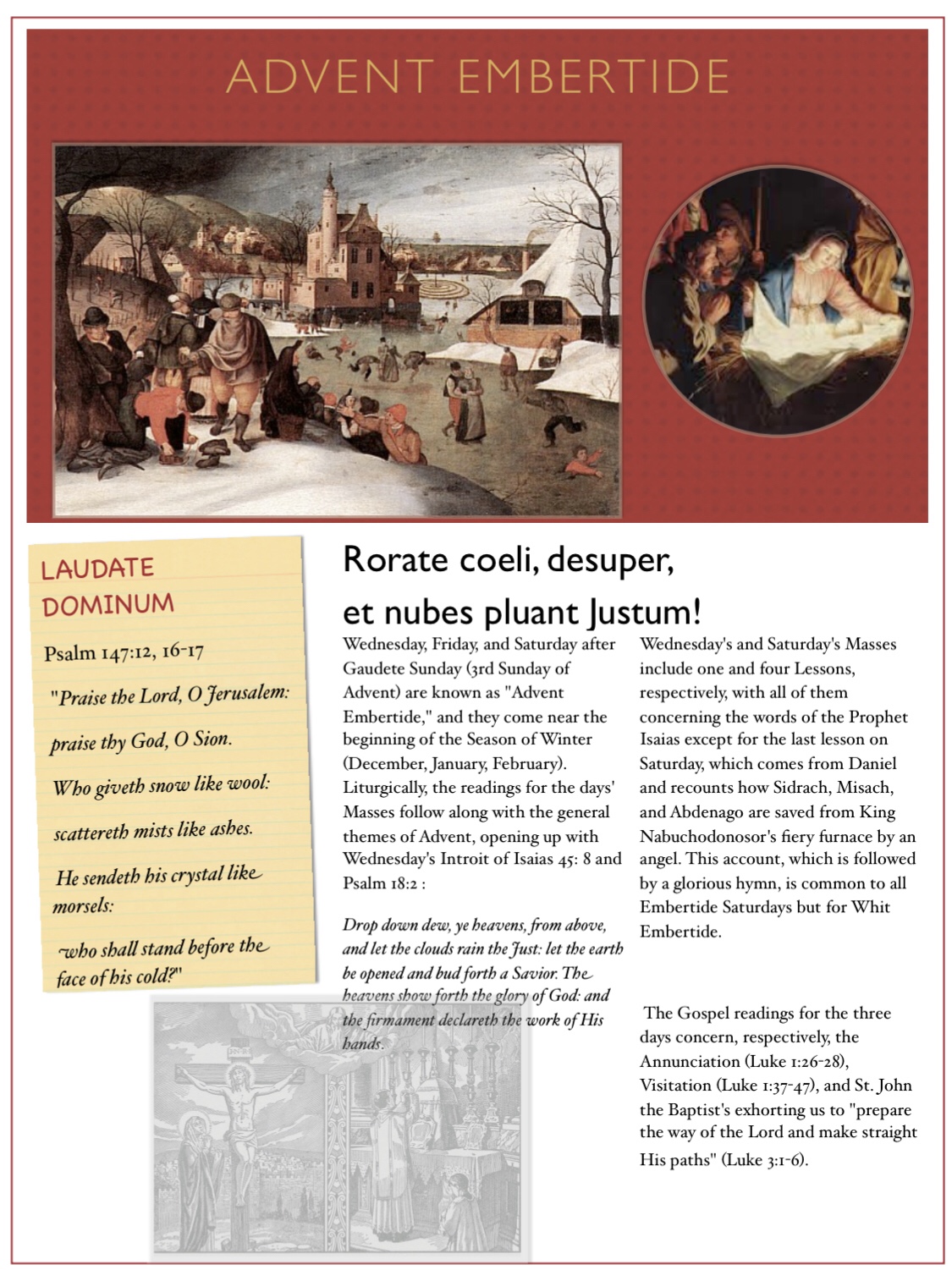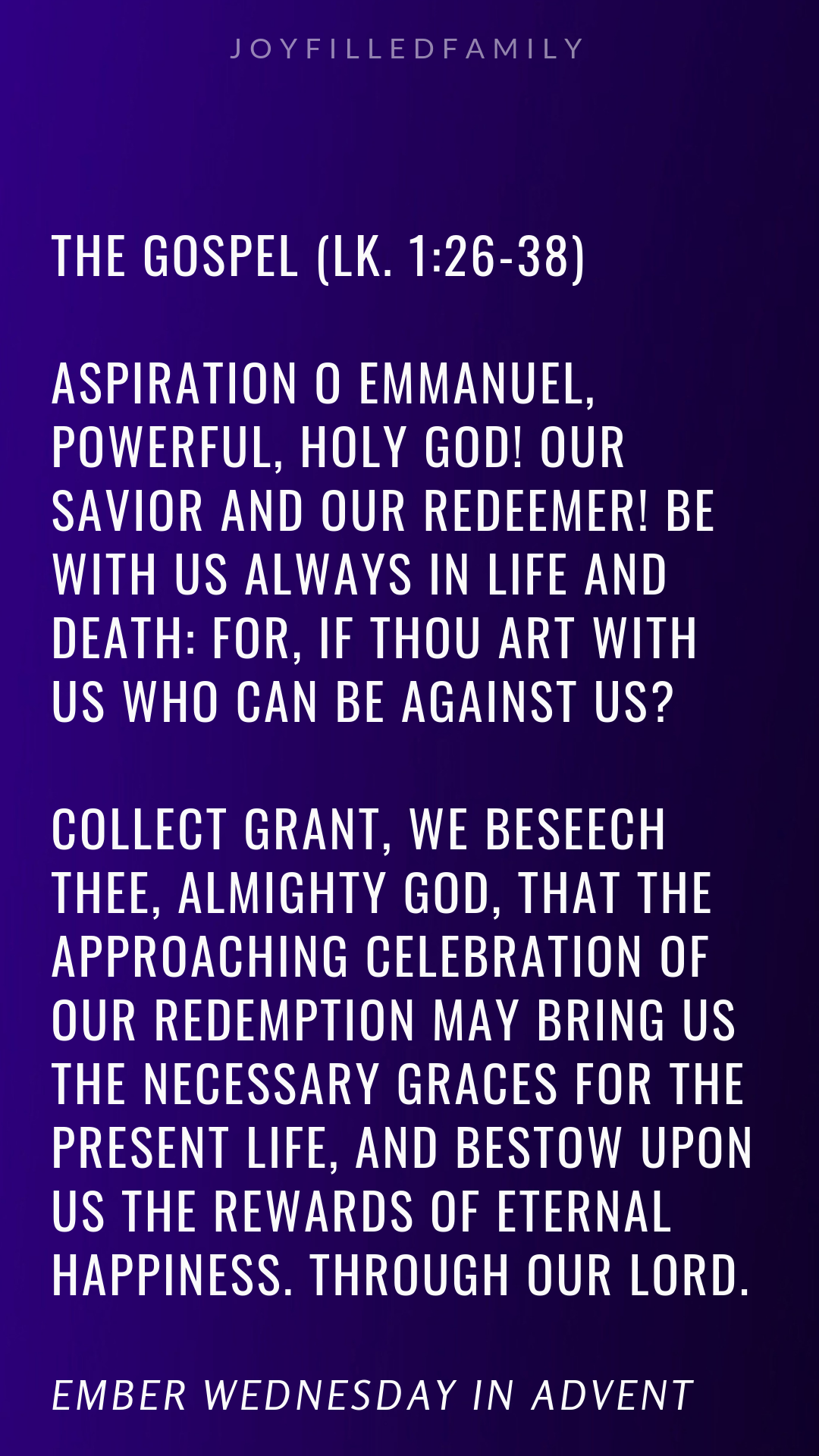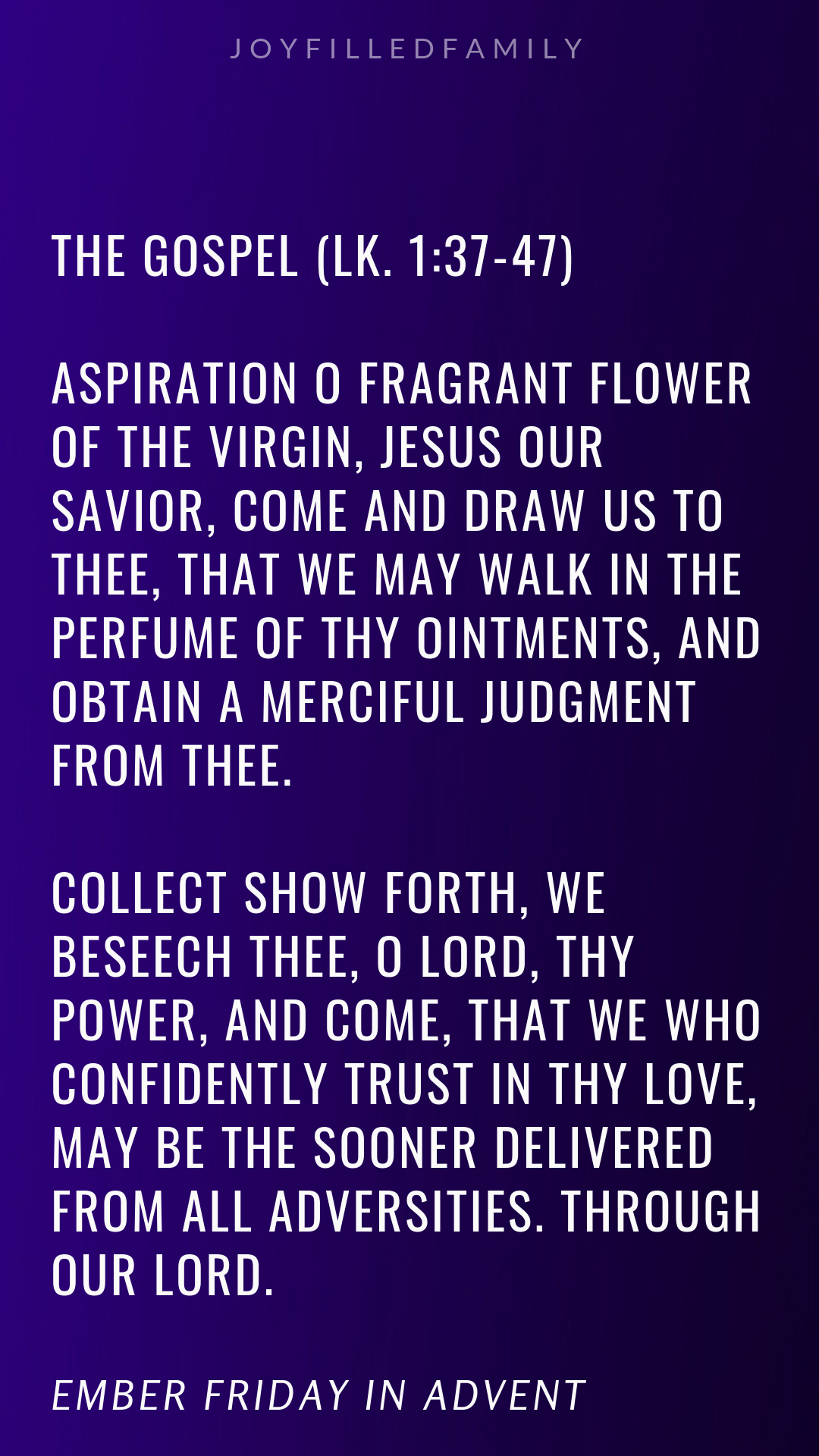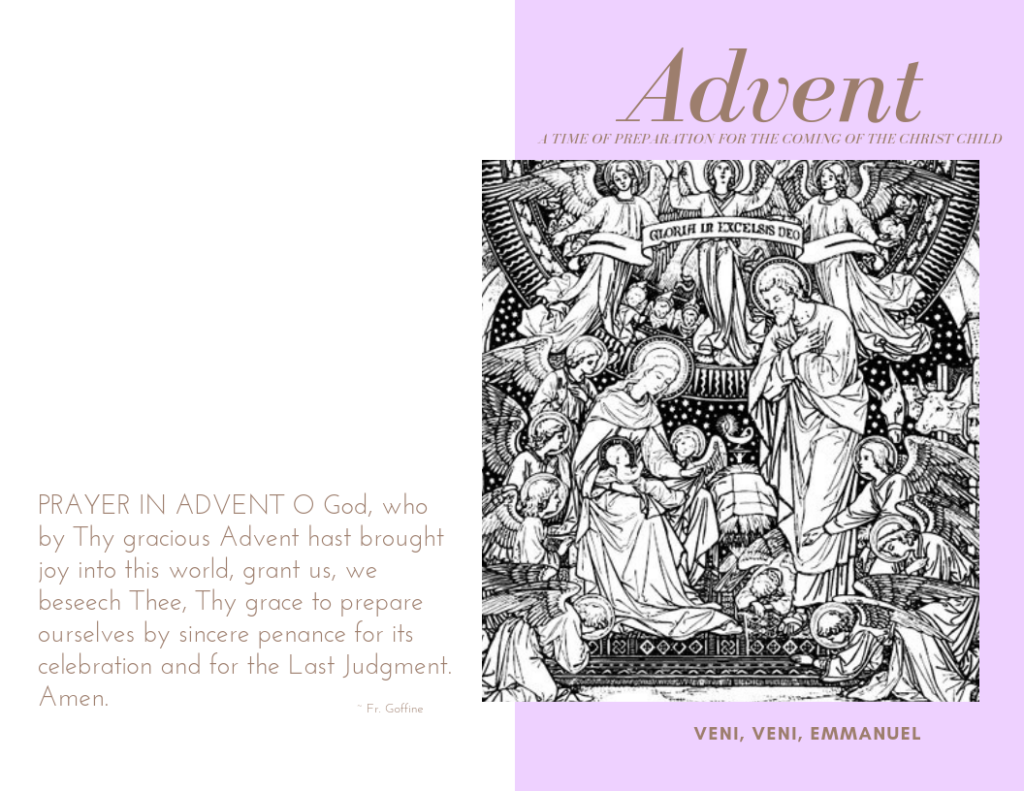The “O” Antiphons
Help prepare us for Christmas by meditating on the Antiphons for Vespers, popularized in the English hymn “O come, Emmanuel” each day from December 17th through 24th.

THE COMMENCEMENT OF THE GREAT ANTIPHONS
The Liturgical Year, Dom Guéranger, O.S.B
The Church enters to-day on the seven days, which precede the Vigil of Christmas, and which are known in the Liturgy under the name of the Greater Ferias. The ordinary of the Advent Office becomes more solemn; the Antiphons of the Psalms, both for Lauds and the Hours of the day, are proper, and allude expressly to the great Coming. Every day, at Vespers, is sung a solemn Antiphon, which consists of a fervent prayer to the Messias, whom it addresses by one of the titles given him by the sacred Scriptures.
In the Roman Church, there are seven of these Antiphons, one for each of the Greater Ferias, They are commonly called the O’s of Advent, because they all begin with that interjection. In other Churches, during the Middle Ages, two more were added to these seven; one to our Blessed Lady, O Virgo Virginum; and the other to the Angel Gabriel, O Gabriel; or to St. Thomas the Apostle, whose feast comes during the Greater Ferias; it began O Thoma Didyme [It is more modern than the O Gabriel; but dating from the 13th century, it was almost universally used in its stead.] There were even Churches, where twelve Great Antiphons were sung; that is, besides the nine we have just mentioned, there was Rex Pacifice to our Lord, O mundi Domina to our Lady, and O Hierusalem to the city of the people of God.
The canonical Hour of Vespers has been selected as the most appropriate time for this solemn supplication to our Saviour, because, as the Church sings in one of her hymns, it was in the Evening of the world (vergente mundi vespere) that the Messias came amongst us. These Antiphons are sung at the Magnificat, to show us that the Saviour, whom we expect, is to come to us by Mary. They are sung twice; once before and once after the Canticle, as on Double Feasts, and this to show their great solemnity. In some Churches it was formerly the practice to sing them thrice; that is, before the Canticle, before the Gloria Patri, and after the Sicut erat. Lastly, these admirable Antiphons, which contain the whole pith of the Advent Liturgy, are accompanied by a chant replete with melodious gravity, and by ceremonies of great expressiveness, though, in these latter, there is no uniform practice followed. Let us enter into the spirit of the Church; let us reflect on the great Day which is coming; that thus we may take oar share in these the last and most earnest solicitations of the Church imploring her Spouse to come, and to which He at length yields.





MORE REFLECTIONS:
DECEMBER 17: The Commencement of the Great Antiphons
DECEMBER 17: O Sapientia!
DECEMBER 18: O Adonai!
DECEMBER 18: The Expectation of the Blessed Virgin Mary
DECEMBER 19: O Radix Jesse!
DECEMBER 20: O Clavis David!
DECEMBER 21: St. Thomas, Apostle
DECEMBER 21: O Oriens!
DECEMBER 22: O Rex Gentium!
DECEMBER 23: O Emmanuel!

